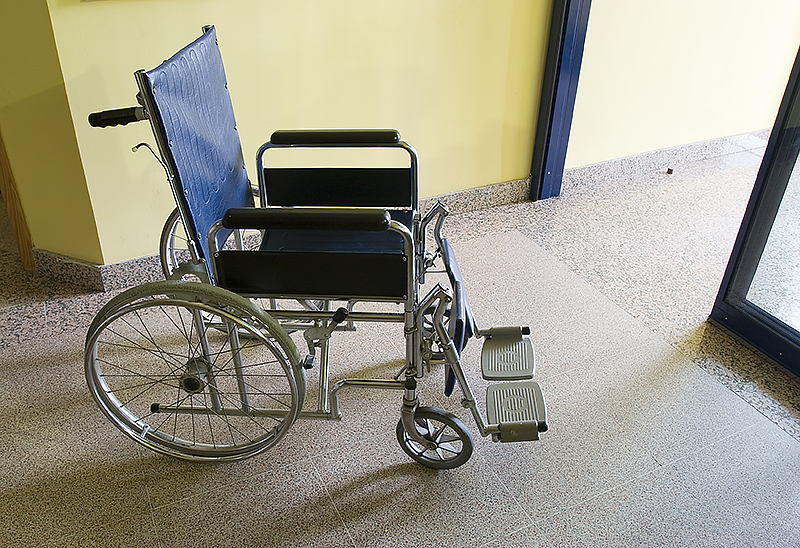Occupational therapy is a form of treatment that uses everyday activities to help people with illnesses or disabilities recover, develop, or maintain practical skills. Doctors often recommend occupational therapy for patients with health problems that interfere with their ability to perform daily tasks at home, school, or work. For example, a person who uses a wheelchair may need to learn how to get around in the kitchen and prepare a meal from a sitting position. A person who has lost sight or the use of an arm or leg may need to learn new ways to bathe or dress. Occupational therapy is often called curing by doing because patients improve their own physical and mental well-being by carrying out activities themselves. 
Professionals called occupational therapists plan and supervise treatment activities for their patients. Occupational therapy assistants work under the supervision of an occupational therapist and do much of the hands-on work with patients, helping them learn and practice skills. Occupational therapists and assistants work in such places as hospitals, rehabilitation centers, mental health centers, schools, nursing homes, and day care centers. They also provide treatment in people’s homes.

How occupational therapy helps patients
An occupational therapist first needs to evaluate a patient’s health problems, background, and interests. The therapist uses this information to plan an individual program that will meet each patient’s needs and make the most of each patient’s abilities.
Helping people with physical disabilities.
People who have a serious illness or injury may lose strength and coordination. For example, a person with multiple sclerosis (MS) may become weak and have difficulty balancing because the disease damages the nerves that control muscles. An occupational therapist will help an MS patient learn activities that preserve strength and maintain the greatest possible range of useful activities. In addition to teaching activities, the therapist may make a splint for the person’s hand, arm, or leg to prevent weakened muscles from stretching or shrinking.

Occupational therapy plays a vital part in helping people with permanent disabilities, such as blindness or the loss of a limb. A blind person might learn to shop alone. The therapist may help the patient find resources, such as special tools or equipment, to replace lost skills or functions. For example, someone whose arm or leg was amputated might learn to drive a specially equipped car.
Specially designed computers enable people with spinal cord injuries, blindness, hearing impairment, or cerebral palsy to communicate, operate household equipment, and find and hold a job. An occupational therapist may suggest rearranging furniture or equipment in a patient’s home to make him or her more independent. The therapist may also recommend structural changes, such as widening doorways, lowering sinks and counters, and installing automatic door openers for people who use wheelchairs.
Occupational therapy helps people with chronic illnesses, such as emphysema or heart disease, redirect their interests into activities within their physical limits. For example, someone recovering from a heart attack might substitute walking for tennis.
Occupational therapy also aids people who become injured at work or develop health problems that affect their ability to do their jobs. Modifications to an employee’s work environment or job responsibilities may enable the person to return to work and avoid reinjury.
Occupational therapy can also aid the growth and development of children. Many children receive treatment at school. Occupational therapists help these children interact with others, develop self-confidence, and take full advantage of opportunities in the classroom and playground. Therapists also work closely with the children’s family members and teachers.
Occupational therapy for children often includes playing with toys or participating in games. A child with learning disabilities may have difficulty recognizing colors and shapes. He or she may play games that involve matching objects of different size, shape, texture, and color. A child with cerebral palsy may have difficulty dressing. An occupational therapist might provide the child with a toy that features zippers and buttons. Playing with the toy helps the child develop the skills needed to get dressed.
Helping people with mental illness.
Occupational therapists also help people who have mental and emotional illnesses, such as anxiety, depression, and schizophrenia. These illnesses may interfere with a person’s ability to cope with daily life. People with mental illness may need to learn how to plan their day, how to manage stress, or how to communicate effectively with family and co-workers. A therapist can help a patient identify the most significant problem areas in his or her life. Together, the therapist and patient can plan a program of strategies to help the patient gain a sense of accomplishment and satisfaction. For example, a person who is depressed might create a daily schedule of goals and activities and check off those that have been completed.
History
Occupational therapy as a profession dates back only to the early 1900’s, but people have long known that work and other activities speed recovery from illness or injury. In A.D. 172, the Greek physician Galen said, “Employment is nature’s best medicine and essential to human happiness.”
During the late 1700’s, physicians in several countries began to prescribe useful activities as treatment for patients with mental illnesses. These doctors included Philippe Pinel in France, Johann Christian Reil in Germany, and Benjamin Rush in the United States. As early as 1798, medical professionals at the Pennsylvania Hospital for the Insane in Philadelphia taught patients such skills as carpentry, needlework, and shoe repair.
Modern occupational therapy developed from a nursing course called Invalid Occupations. This course was first offered to student nurses in 1906 by Susan E. Tracy, a Boston nurse. American architect George E. Barton originated the term occupational therapy. He himself received this form of treatment after one of his feet was amputated. The need to help disabled veterans of World Wars I (1914-1918) and II (1939-1945) stimulated the growth of occupational therapy. The World Federation of Occupational Therapists was established in Liverpool, England, in 1952.
Careers
Anyone who is interested in a career in occupational therapy must first earn a bachelor’s or master’s degree in occupational therapy from an accredited college or university. Accredited programs include courses in biology, psychology, sociology, and occupational therapy theory and practice. All programs require students to complete a period of supervised clinical training. Most teaching, research, and administrative positions in occupational therapy require a master’s or doctor’s degree.
A person who wants to become an occupational therapy assistant must complete an associate degree program. Associate’s programs also include academic coursework and supervised clinical training.
Upon completion of the program, graduates must pass a certification examination. Assistants must also take an exam. The American Occupational Therapy Association, Association of Occupational Therapists of Ireland, British Association/College of Occupational Therapists, Canadian Association of Occupational Therapists, Singapore Association of Occupational Therapists, and similar professional groups in other countries can provide information on training programs and careers.
